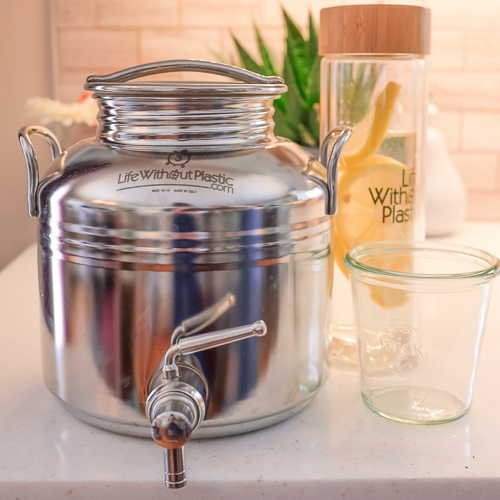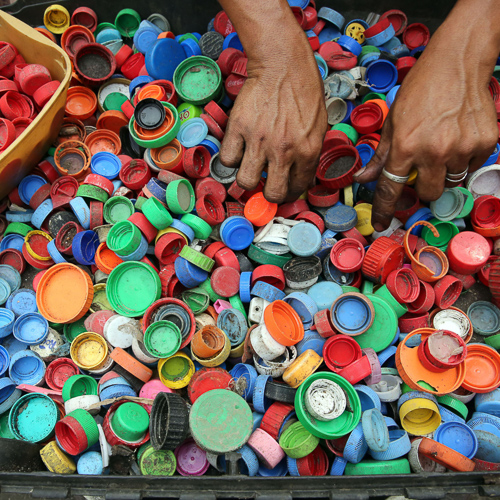Think about it… all of the oil that is spewing out of BP’s open underwater well can be compared to all the plastic we throw out in the environment every single day… Go to a take out restaurant and take a look at the garbage cans. The amount of disposable plastic in there multiplied by millions corresponds to the amount of plastic that is discarded every day in the world. It is estimated that there are at least 200 billion pounds of plastic in the ocean. We look in horror at the gushing oil well, but we contribute to just as much pollution collectively every day by consuming and throwing out so much throw-away plastic.
An article by Daniella Russo, executive director of the Plastic Pollution Coalition entitled “The other, bigger ‘oil spill’: Your use of disposable plastic” made me reflect on the fact that we contribute every single day to the pollution of our environment through petroleum-derived objects we throw out.
21 June 2010 — Think about it… all of the oil that is spewing out of BP’s open underwater well can be compared to all the plastic we throw out in the environment every single day… Go to a take out restaurant and take a look at the garbage cans. The amount of disposable plastic in there multiplied by millions corresponds to the amount of plastic that is discarded every day in the world. It is estimated that there are at least 200 billion pounds of plastic in the ocean. We look in horror at the gushing oil well, but we contribute to just as much pollution collectively every day by consuming and throwing out so much throw-away plastic.
(Photo: seacat.wordpress.com)
An article by Daniella Russo, executive director of the Plastic Pollution Coalition entitled “The other, bigger ‘oil spill’: Your use of disposable plastic” made me reflect on the fact that we contribute every single day to the pollution of our environment through petroleum-derived objects we throw out.
“We are simply using too much disposable plastic for the small percentage that gets recycled to even make a dent. And, unlike paper, glass, or stainless steel, most plastic can only be “down-cycled,” or used for increasingly fewer purposes. All the recycling, like using a teaspoon to empty the ocean, simply can’t stem the tide of plastic engulfing us.” (…)
“The most powerful thing people can do to clean up the oceans is to refuse to use “disposable” plastics in the first place. Let’s add “Refuse” to the list of R’s: Refuse-Reduce-Reuse-Recycle. Until we reduce our use of plastics wherever possible, real change will not happen. Recycling or cleanup projects alone won’t cut it.”
It takes a lot of will power to plug that gushing well of disposable plastic production. Just as every small plastic-use gesture contributes to creating it, every small gesture can also help plug it.
Chantal Plamondon, Co-Owner
LifeWithoutPlastic.com










